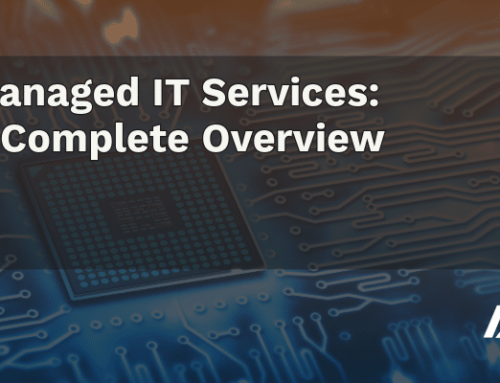When a disaster or system failure disrupts your business, data loss can be a major — and a costly — consequence. And yet it’s an inevitable part of being in business: hard drives malfunction, lost files or deleted files result from human error, and frequent cyber attacks are an unfortunate fact of today’s landscape.
But there is a way to protect your data and keep your operations from coming to a screeching halt: Business continuity and data recovery planning.
Backing it Up
Back in the day, data was backed up on tapes and stored at an offsite location in a physical vault. Over time, that process and the technology evolved to utilize more nimble, higher capacity storage devices, like external hard drives, USB drives, and flash drives. The result was the same: Take the critical information, copy it, and store it safely elsewhere.
These days, backing up your data is just as essential and, in many ways, even simpler than ever. That vault may or may not be a physical storage structure. It might be in the cloud, and that backup is less of a DIY process and more than likely has a third-party services or platform component.
In other words, there’s a software for that, and you don’t even have to manage your data backups in-house. Whether your IT department is strapped, is made up of a single IT employee, or even if you don’t have any in-house IT to speak of, you can still have the robust data recovery and protection measures you need to maintain business continuity.
Here are the questions you should be asking to determine whether or not you are prepared for your business to go on when disruption occurs.
Do you have a business continuity plan in place?
Business continuity planning involves the proactive establishment of protocols and processes that will help you keep operations running when disaster strikes. Many small businesses are so consumed with the day-to-day, that this kind of planning gets put on the back burner, but it’s every bit as critical as any other fundamental business document for the health and reputation of the business.
It should state what the essential functions of the business are and detail the systems and processes that need to be maintained and how.
When putting your plan together, consider these questions:
- If all your technology systems suddenly became inoperable or unavailable, how would your business or separate departments function?
- What workloads need to be replicated?
- What risk management systems exist?
- What are the skills or expertise needed for recovery?
- Who in the business has the knowledge, skills or expertise for recovery?
- What are the single points of failure?
- In the event of failure or disruption, what workarounds exist or what need to be created?
- What is currently being outsourced and what is their process for engaging your partners?
- What are the security or operational controls needed in case of disruption?
- What compliance requirements does your business have?
Who is in charge of leading disaster recovery efforts at your business?
Your answer will depend upon your organization and IT department. In many businesses, business continuity and disaster recovery planning are a cross-functional exercise, involving everyone from the CEO to senior management to engineering and IT. It’s important that key stakeholders and department representatives take part, and that all are on the same page. Set strong communication and assign defined roles from the get-go.
Many businesses prefer to get help from an expert third party. Data recovery services are part of disaster recovery plans offered by your managed services provider. Look for a provider that delivers tailored solutions to your business, and that will assess your environment and requirements before creating a comprehensive response plan for you. It’s also helpful if your provider takes the lead on training employees in the plan specifics.
What backup and data recovery methods will you use?
The best systems incorporate multiple levels of data recovery.
Hybrid Cloud:
Hybrid cloud uses a combination of private and public backup solutions. Benefits include less downtime, the ability to leverage virtually infinite storage space in the cloud, and compliance (if that is required by your vertical).
Offsite Disaster Recovery:
All servers, data, and programs are backed up locally, encrypted, and stored in an out-of-state data center. This is a great feature in case of a natural disaster that wipes out local infrastructure and allows you to tap into and operate from that remote data center until local operations are restored.
Auto Backups:
Automation means no human action is required beyond the setup and maintenance of the automations. Each backup and virtual machine test occurs on a schedule, with alerts reported locally. Alerts can even be sent to your smartphone.
File Restore:
This capability quickly restores files, folders, or even entire databases that are lost or accidentally deleted.
What’s Next?
Business continuity and disaster recovery planning go hand-in-hand. As complex as these matters are, they are absolutely critical to the survivability of your business — and you don’t have to handle them alone. Contact us to learn more about our tailored approach to disaster recovery, and how we can help you prepare for the unexpected.




